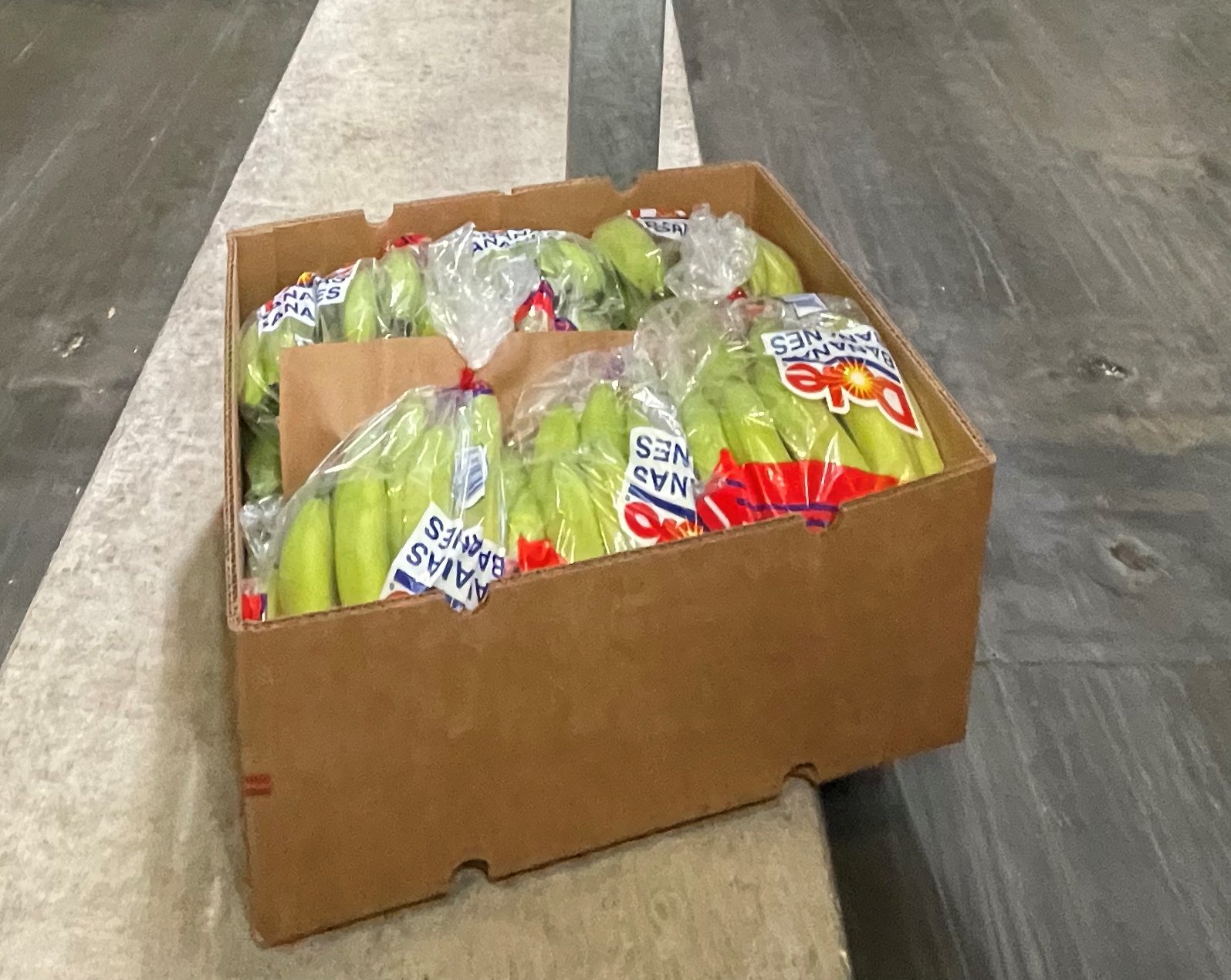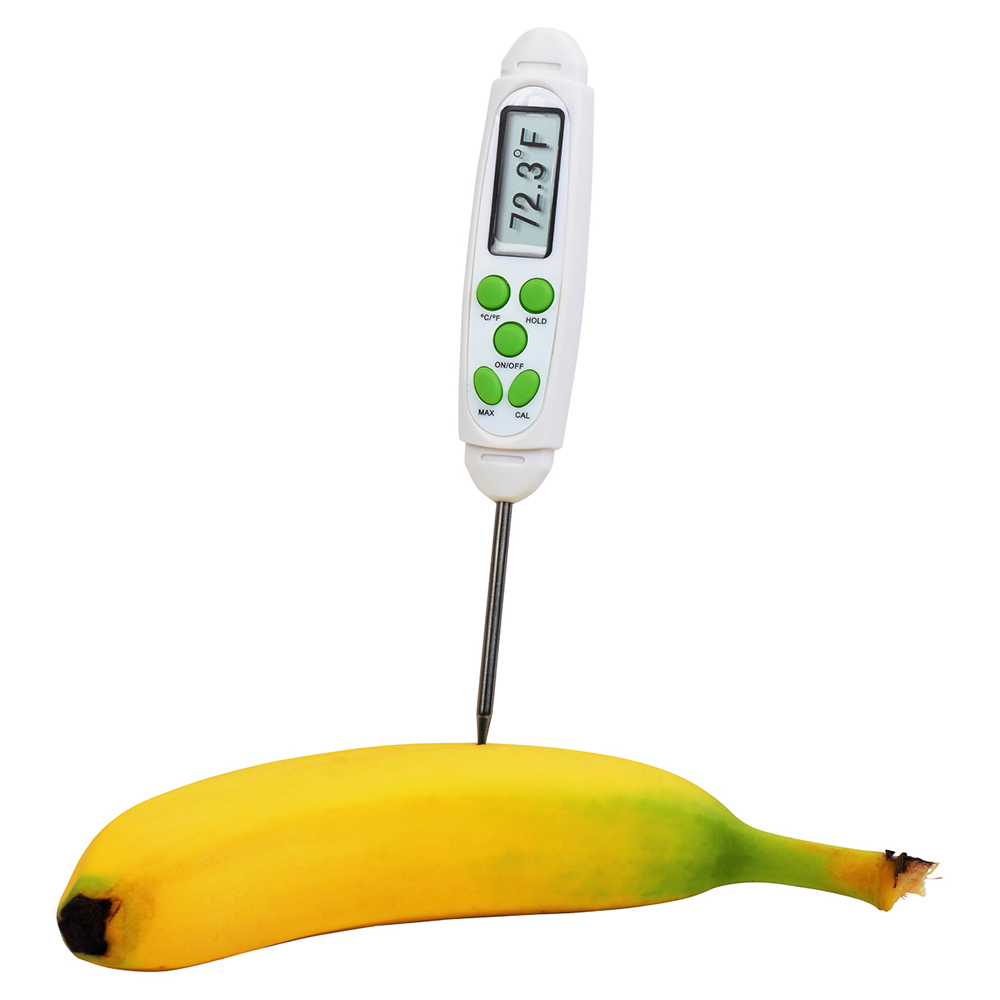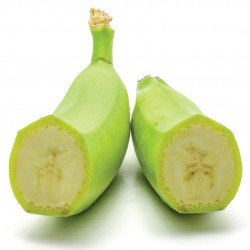How Quality Control for Bananas Begins at the Warehouse
One of the most important steps in any fruit ripening process starts at the very beginning: receiving the fruit as it comes into the warehouse or distribution center. At times it may seem unimportant or easy to overlook, but when this quality control procedure is disregarded, damaged fruit can go unaccounted for and often lead to a preventable loss.
The common practice for ripeners is to have some form of quality control procedure when receiving fruit at the ripening facility. The best practice is to never accept bananas below 58°F (14.4°C) air or trailer temperature. Check the temperature with data recorders for the load if available. If bananas are received lower than 58°F, chilling damage may have occurred. Additionally, it is important that for each quality assurance check, multiple bananas are tested from different sections of the load.
Once the fruit has been accepted by the warehouse, the first quality control check is to measure pulp temperature. Check banana pulp temperature using a digital probe thermometer like this one here. Secondly, bananas should be cut and smelled. As funny as this may sound, upon arrival bananas should have a cucumber-like smell when cut into. If the bananas are hard to peel, this indicates that the fruit is at the lower end of the maturity level. The harder to peel, the more latex present in the banana, as well. Conversely, if the bananas are easy to peel, this indicates greater maturity.
Visual quality control checks encompass roundness, length, and overall shape of the banana. If the banana has distinct angles or appears to have edges, then the banana is less mature. As the banana becomes more round with less distinct angles, growth in maturity has occurred. The second visual indicator involves looking for an elongated flowering end; this is the end not attached to the banana hand. If an elongated end is present, this indicates that the banana is not as mature as it could be. Finally, visually analyze the seed and pulp color. By cutting the banana length-wise horizontally, the pulp and seed color should be easily visible. The more yellow the pulp and darker the seeds, the more mature the banana. From this, ripeners can best determine the stage of ripeness or maturity for an entire load of bananas.
Next, ripeners should analyze the latex within banana skins. To do this, utilize a produce knife to cut the banana in half. Grabbing each end in one hand, squeeze the banana tightly until latex is visible. If there is less latex present, this indicates that the banana will ripen faster. Once again looking at the skin for quality assurance, the skin should be peeled open. Once peeled open, warehouse managers should look for browning or spotted vascular damage within the peel. If this is evident, this is an indication of chill damage.
Before ever moving to the next stages of ripening or degreening bananas, these quality checks should be done to determine fruit maturity. The amount of time ethylene is applied to bananas will vary based on fruit maturity levels. The quality and maturity checks that occur during the receiving process are necessary to create an effective ripening plan for each unique load of fruit a ripener receives. With the information acquired from properly used postharvest tools, equipment, facilities, customized ethylene exposure schedules, temperature, relative humidity, and CO2 management can be used to deliver perfectly ripened pallets of fruit to customers all over the world.
If additional help is needed in establishing or improving your banana ripening program, contact Dennis E. Kihlstadius, a quality control expert for produce:
Dennis E. Kihlstadius
Produce Technical Services
denkihl@yahoo.com
(310) 567-8445



